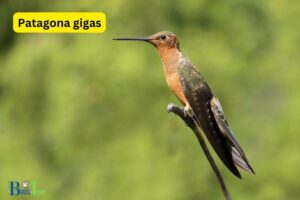Broad Tailed Hummingbirds Often Nest in Quaking: Explain!
Broad-tailed hummingbirds (Selasphorus platycercus) are known for their affinity to nest in quaking aspens (Populus tremuloides), exhibiting a unique relationship that enhances their nesting success.
These birds prefer aspen habitats due to the microclimate, food availability, and predator avoidance provided by the aspens.
Conservationists are focusing on preserving these critical habitats to support the broad-tailed hummingbird’s reproductive needs and overall ecosystem health.
The nesting behavior of broad-tailed hummingbirds in quaking aspens includes:
The quaking aspen provides an ideal nesting backdrop for the broad-tailed hummingbird, offering both refuge and resources.

Key Takeaway
6 Aspect of Broad-tailed Hummingbird Nesting Habits in Quaking
| Aspect of Nesting | Details |
|---|---|
| Species | Broad-tailed Hummingbird (Selasphorus platycercus) |
| Preferred Nesting Tree | Quaking Aspen (Populus tremuloides) |
| Nest Characteristics | Cup-shaped, constructed with plant fibers and spider silk |
| Reasons for Preference | Microclimate control, insect food sources, natural camouflage, and predator avoidance |
| Nesting Challenges | Habitat destruction, climate change, predation |
| Conservation Efforts | Habitat preservation, climate change mitigation, research, and monitoring |
Habitat Preference
Broad-tailed hummingbirds typically prefer nesting in high-altitude coniferous forests with abundant quaking aspen trees.
These forests provide the ideal environment for the hummingbirds due to the availability of suitable nesting materials and protection from predators.
The high-altitude coniferous forests offer the hummingbirds a cool and moist climate, which is essential for their survival.
The presence of quaking aspen trees also plays a significant role in providing secure nesting sites.
The dense foliage and sturdy branches of the aspen trees offer protection and support for the delicate nests of the hummingbirds.
Additionally, the nectar-rich flowers found in these habitats serve as a vital food source for the hummingbirds.
This preferred habitat not only meets the hummingbirds’ nesting requirements but also ensures the availability of essential resources for their sustenance.
Nesting Behavior
They exhibit a distinct nesting behavior characterized by the selection of secure locations within the high-altitude coniferous forests, particularly favoring the sturdy branches of quaking aspen trees for building their delicate nests.
This choice of nesting location provides the necessary protection from predators and the elements.
The female broad-tailed hummingbirds construct cup-shaped nests using plant fibers, downy materials, and moss, which are then bound together with spider silk for flexibility and expansion as the chicks grow.
These nests are often situated at heights of around 10 to 20 feet above the ground.
Moreover, the birds show territorial behavior around their nesting sites, defending them vigorously from intruders.
This nesting behavior not only ensures the safety and comfort of their offspring but also allows for easy access to the abundant nectar sources found in the surrounding flora, particularly the quaking aspen trees.
This nesting behavior illustrates the intricate relationship broad-tailed hummingbirds have with the quaking aspen trees.
Aspen Tree Relationship
The intricate relationship between broad-tailed hummingbirds and quaking aspen trees is characterized by the birds’ preference for nesting in the sturdy branches of these trees, ensuring the safety and comfort of their offspring.
Quaking aspen trees provide an ideal habitat for nesting hummingbirds due to their tall, straight trunks and high, open canopies.
The dense foliage offers protection from predators and the elements, while the flexibility of the branches allows the hummingbirds to easily access their nests.
Additionally, the aspen trees’ ability to reproduce through root sprouting creates a continuous supply of suitable nesting sites for the birds.
This close association between broad-tailed hummingbirds and quaking aspen trees highlights the importance of preserving the natural habitats of these trees to support the delicate ecological balance of these avian species.
Nesting Challenges
Nesting challenges arise for broad-tailed hummingbirds in their choice of quaking aspen trees due to the potential risks associated with predation and environmental factors.
Quaking aspen trees, while providing a suitable environment for nesting, also expose the hummingbirds to increased predation due to their open structure.
Additionally, the fluctuating environmental conditions of aspen groves, such as sudden temperature changes and windy conditions, pose risks to the integrity of the hummingbird nests.
These challenges necessitate the need for the hummingbirds to adapt their nesting behaviors and strategies to mitigate these risks.
Understanding the specific challenges faced by broad-tailed hummingbirds in nesting within aspen groves is crucial for the development of effective conservation efforts aimed at ensuring the long-term sustainability of their populations.
Conservation Efforts
Amid the nesting challenges faced by broad-tailed hummingbirds in quaking aspen trees, conservation efforts are crucial for ensuring the long-term sustainability of their populations. Protecting the habitats where these hummingbirds nest and forage is paramount.
Conservation organizations and researchers are working to identify and preserve key breeding areas, as well as to raise awareness about the importance of maintaining healthy aspen stands.
Efforts to mitigate the effects of climate change, which can impact the availability of suitable nesting sites and food sources, are also essential.
Additionally, promoting responsible land management practices, such as sustainable logging and forest restoration, can help maintain the integrity of aspen habitats.
Through collaborative conservation initiatives, it is possible to safeguard the future of broad-tailed hummingbirds and the ecosystems they depend on.
Conclusion
Broad-tailed hummingbirds display a strong preference for nesting in quaking aspen trees. Their nesting behavior is closely tied to this habitat, presenting both benefits and challenges.
Conservation efforts are crucial to protect these unique nesting sites and ensure the continued survival of the species.
As the saying goes, “A bird in the hand is worth two in the bush,” reminding us of the delicate balance of nature and the importance of preserving their nesting grounds.






